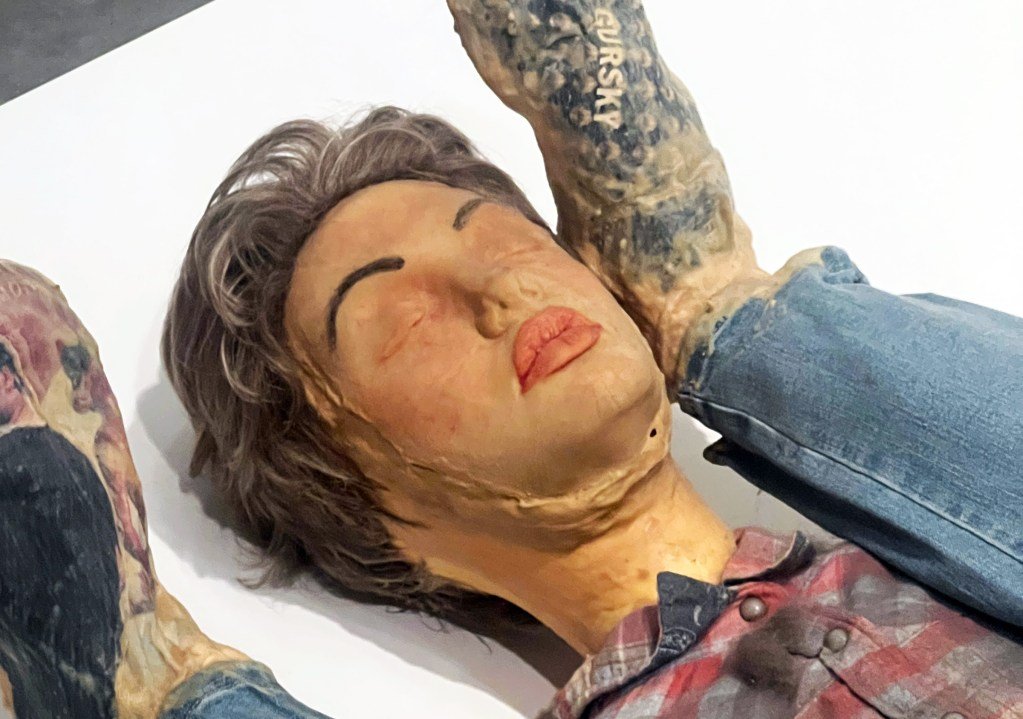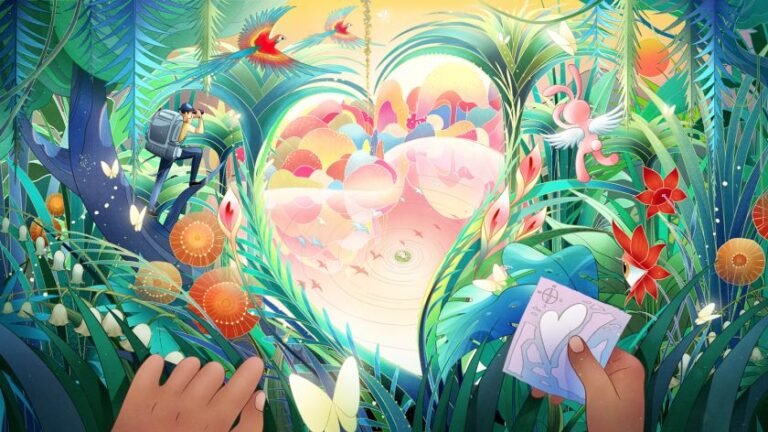

HUMLEBAEK, Denmark — Who owns a memory? What is a memory? And do your memories always belong to you? These questions hover in the air of Dollhouse, a retrospective of American artist Kaari Upson at the Louisiana Museum in Denmark, the first of its kind following her death in 2021 from cancer at age 51. The exhibition is vast, taking over the entire south wing gallery. It is varied, with works spanning sculpture, painting, film, installation, drawings, and more. But above all, it exemplifies Upson’s prolific work ethic — almost all the featured pieces were created in the 2010s — and her potent, playfully macabre sensibility. She had a very specific talent for unsettling the domestic, injecting eeriness into the everyday. The exhibition is presented as a staged dollhouse that visitors can wander through, prompting them to question what in their experience, if anything, is real.
The retrospective is not chronological; fitting, given the time-twisting nature of Upson’s work. And as many works share identical titles, it is difficult, if not impossible, to locate the true beginning and ending of projects, some of which lasted years. Instead, it is organized by theme: “When Kaari met Larry,” on the impact of a half-real, half-fictional man on her work; “The life of things,” on how objects can hold stories; “Haunted by history,” stylized takes on her own life; and “Endgame,” on Upson’s exploration of endings and death.

“Larry” is one of the most pervasive characters in Upson’s oeuvre. Inspired by the remnants of an abandoned house across the street from her childhood home, Upson began making work centering her imaginings of the resident’s Playboy life. Dollhouse features many pieces from this period, including the large-scale installation “Recollection Hysteria”(2012), in which she recreated a room in the abandoned house in dingy-colored latex from memory, positioning mattresses, doors, and other objects in a gravity-defining manner. What should be on the floor is on the wall; what should be on the wall is on the ceiling. He also shows up in “Kiss” (2008), in which Upson pressed still-wet painted portraits of herself and Larry together in different positions, and in untitled video works where she dissects his dummy body while dressed as a nurse, like the phantom neighbor he was.
Other stirring elements in the show are her collections of everyday furnishings: A silicone mattress casts a peculiar iridescence in “X (King)” (2013); contorted sofas are both nightmarish and awe-inspiring in “Left Brace Erase, Back Brace Face” (2016); and the line of crutches made of latex and pocked with dirt and hair that make up “Cult of Individualism” (2012) blur fragility with beastliness. These are visceral, bodily works; one doesn’t just view her work, they feel it.
Two other large-scale installations play with innocence and its recollection in the most direct projection of Upson’s obsession with dollhouses. “There’s No Such Thing As Outside” (2017–19) features an empty, life-size home with domestic items like pills, dentures, and coffee tables in the dark of the crawlspace underneath, highlighted only by light shining through the holes in the wooden floor above. A video of Upson and a childhood friend playing kids’ games while distorted versions of their faces are cast over their closed eyes unfolds nearby, their voices echoing and overlapping. Meanwhile, “Mother’s Legs” (2018–19) is a forest of larger-than-life casts of Upson’s own leg, swinging from the ceiling like butchered meat — as if to suggest that what seemed like a safe place to hide as a knee-height child was, in fact, no sanctuary.
Dollhouse is a very complete exhibition, offering multiple entry points to the largest themes of her oeuvre, and deeply unsettling in its affect. Every element of the show projects the relatable fear that the world is not the nice place we want it to be, no matter how much we play pretend. Always lurking in her work is a sense of soiled perfection. The audience is a voyeur to the battle between lofty expectations, performed belonging, and the bleak reality of what is. Here, in an idyllic little town that looks out over the calm waters of the Øresund Strait, museumgoers are invited to experience an unraveling. This is a form of intelligent play — one that reveals truths you might not want to know about that which you thought you knew well. Is how you remember it really how it all was?




Kaari Upson: Dollhouse – A Retrospective continues at the Louisiana Museum of Art (Gammel Strandvej 13, 3050 Humlebæk, Denmark) through October 26, 2025. The exhibition was co-organized by the Louisiana Museum of Art, Kunsthalle Mannheim, and Masi Lugano. It will travel to Kunsthalle Mannheim in Mannheim, Germany, from February 13 to May 31, 2026, and to Masi Lugano in Lugano, Switzerland, on dates to be announced between 2026 and 2027. The exhibition was curated by Anders Kold.


